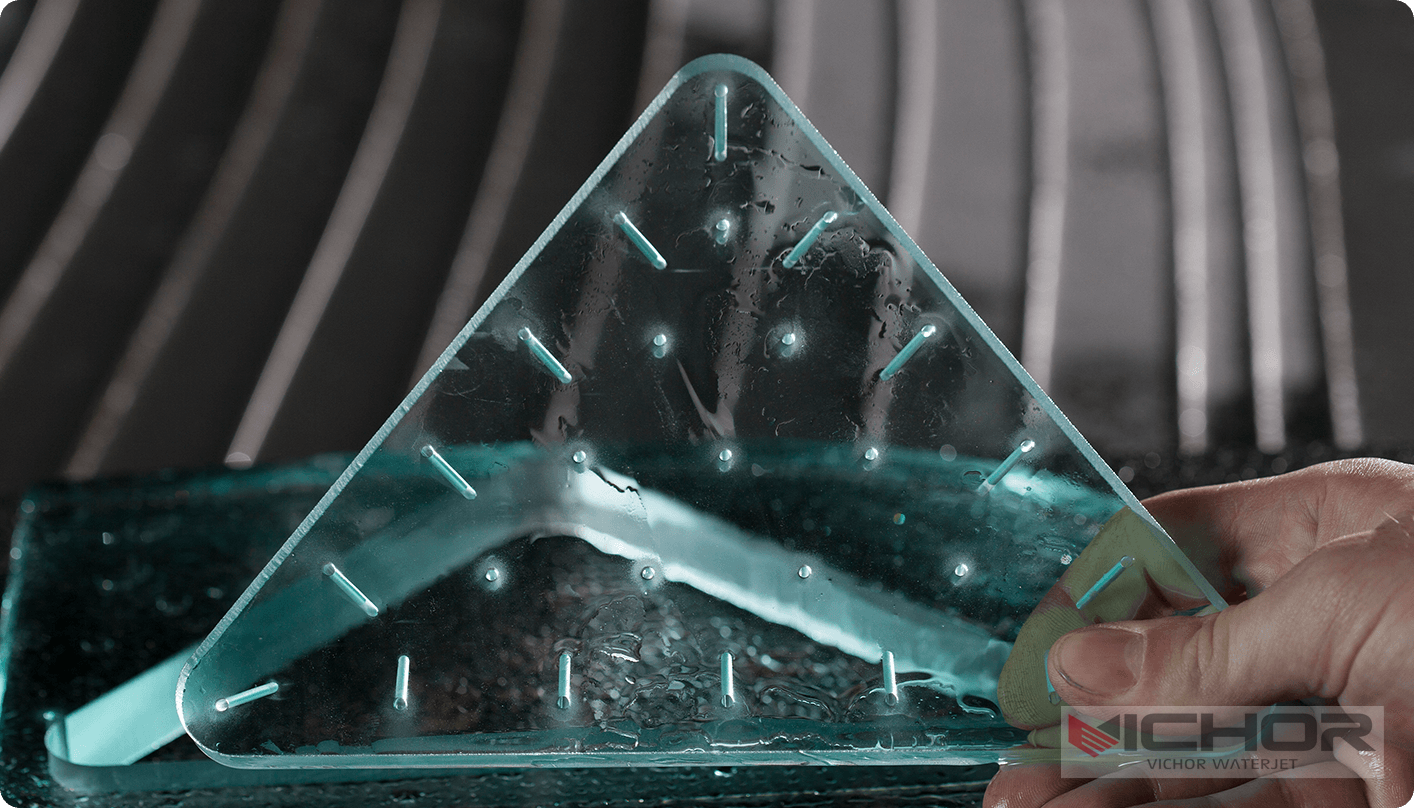
The Desktop Waterjet Cutter: 5 Surprising Realities Beyond the Hype
The first time I saw a desktop waterjet cutter in action, it was slicing intricate patterns in titanium jewelry components while sitting mere feet from someone’s coffee mug. The operator, a prototype shop owner named Sarah, casually mentioned she’d run the machine for seven hours straight the previous day. “My customers think I’m shipping these parts out to a specialized facility,” she confessed. “They never imagine this quality comes from something that fits next to my 3D printer.”
If you’re investigating the possibility of bringing waterjet capability in-house, the concept of a desktop waterjet cutter probably seems both revolutionary and somewhat unbelievable. The technology that once required dedicated industrial space has indeed become dramatically more accessible—but with important caveats that many first-time buyers discover too late.
What Exactly Constitutes a Desktop Waterjet Cutter?
When manufacturers refer to a desktop waterjet cutter, they’re describing a complete cutting system with a footprint small enough to fit on a standard workbench or small stand—typically under 6 feet in total length and width. These aren’t just scaled-down versions of industrial machines; they’re completely re-engineered systems designed for accessibility while maintaining cutting capability.
A true desktop waterjet cutter includes the high-pressure pump, cutting chamber, motion system, and controls in a consolidated package. The pumping technology often differs from industrial systems, with many desktop units utilizing direct-drive or smaller intensifier pumps that generate sufficient pressure (typically 40,000-60,000 PSI) for materials up to about 1/2 inch thick. The VICHOR MicroCut series, for instance, uses a specialized compact intensifier that delivers 55,000 PSI while occupying about the same space as a desktop computer tower.
The Unexpected Applications Transforming Small Operations
While the obvious use for a desktop waterjet cutter involves prototyping and small parts production, the most valuable applications often emerge after installation. Beyond cutting metal blanks, innovative users are deploying these compact systems for:
Custom Electronics Enclosures: Precise cutting of aluminum and copper shielding without thermal damage to sensitive components
Research and Development: Creating specialized components from exotic materials in laboratory settings
Medical Device Prototyping: Manufacturing small stainless steel and titanium components with complex geometries
Educational Applications: Allowing engineering students hands-on experience with subtractive manufacturing
I recently visited a university research lab where their desktop waterjet cutter processes over 30 different materials weekly—from delicate composites for sensor mounts to specialized ceramics for experimental apparatus. The technician noted that before acquiring their VICHOR system, they relied on outside vendors with lead times that often stalled critical research.
Critical Capabilities and Limitations to Understand
The appeal of a desktop waterjet cutter often centers on what it can do, but understanding its boundaries proves equally important. Most desktop systems handle materials up to approximately 1/2 inch thick with excellent precision, though cutting speed decreases significantly as material thickness increases. The cutting envelope typically ranges from 12″x12″ to 24″x24″, suitable for small parts but inadequate for full-sized sheets.
The software interface represents a crucial differentiator between basic and professional desktop waterjet cutter systems. Simplified interfaces appeal to beginners but may lack advanced features like automatic taper compensation. More sophisticated systems, including VICHOR’s implementation, provide robust CAD/CAM integration while maintaining user-friendly operation through guided setup procedures.
Comparing Desktop Waterjet Cutter Technologies
The market for desktop waterjet cutter systems divides into several distinct categories. Entry-level systems often utilize lower-pressure pumps (30,000-40,000 PSI) and simplified controls, focusing primarily on soft materials or very thin metals. Mid-range professional systems like the VICHOR MicroCut offer higher pressure capabilities (50,000-60,000 PSI) and more sophisticated motion control suitable for precision work in harder materials.
The most significant technical variation involves the pumping technology. While industrial waterjets predominantly use intensifier pumps, desktop waterjet cutter models may employ either compact intensifiers or advanced direct-drive systems. Each approach involves different trade-offs in terms of pressure consistency, maintenance requirements, and operational costs that buyers should carefully evaluate against their specific needs.
The True Cost of Desktop Waterjet Ownership
The purchase price of a desktop waterjet cutter represents only part of the financial picture. While entry-level systems might start around $35,000, professional-grade units typically range from $55,000 to $85,000. Beyond the initial investment, operational expenses include abrasive consumption (typically 0.3-0.8 pounds per minute), replacement nozzles and focus tubes, and electrical power.
Many first-time buyers underestimate the ancillary requirements of a desktop waterjet cutter. Proper installation requires adequate ventilation, a dedicated electrical circuit, and water supply/drainage connections. The VICHOR MicroCut simplifies this with integrated filtration and a standard 220V connection, but planning for these requirements remains essential for smooth implementation.
Service and Support Considerations
The technical complexity of waterjet technology makes service support particularly important for desktop systems, which often serve as primary production equipment rather than experimental tools. When evaluating a desktop waterjet cutter, investigate the manufacturer’s service network, technical support availability, and spare parts logistics.
Global manufacturers like VICHOR typically provide more comprehensive support infrastructures than smaller specialty builders. This distinction becomes critical when facing technical issues that could idle your production capacity. Before purchasing any desktop waterjet cutter, verify response time commitments and spare parts availability for critical components like high-pressure seals and motion system parts.

Integrating a Desktop Waterjet Cutter Into Your Workflow
The most successful desktop waterjet cutter implementations occur when the technology seamlessly integrates into existing operations. Unlike industrial systems that often demand dedicated operators, desktop units typically serve multiple roles within smaller organizations. The ideal desktop waterjet cutter should complement rather than complicate your workflow.
Effective integration considerations include software compatibility with your existing design tools, physical placement that supports efficient material handling, and operational procedures that align with your quality control systems. Manufacturers like VICHOR address these needs through standardized file format support, ergonomic designs that simplify loading and unloading, and built-in monitoring capabilities that track cutting parameters.
Frequently Asked Questions About Desktop Waterjet Cutters
Q1: How does the cut quality from a desktop waterjet cutter compare to industrial systems?
A1: For materials within their thickness capacity, a quality desktop waterjet cutter can achieve comparable cut quality to industrial systems, with surface finishes around 125-200 Ra. The primary difference emerges in thicker materials, where industrial systems maintain better taper control and cutting speed.
Q2: What safety precautions are necessary with a desktop waterjet cutter?
A2: Essential safety measures include hearing protection (operation typically generates 80-85 dBA), splash guarding to contain high-pressure mist, and proper electrical grounding. Quality systems like the VICHOR MicroCut include integrated safety interlocks and enclosed cutting chambers that mitigate these risks.
Q3: Can a desktop waterjet cutter process the same materials as industrial machines?
A3: Yes, with thickness limitations. A capable desktop waterjet cutter handles the same material range—metals, composites, stone, glass, ceramics—but typically maxes out at 1/2 inch thickness for metals and 1 inch for softer materials. Cutting speed decreases significantly as you approach these limits.
Q4: What specialized training is required to operate a desktop waterjet cutter?
A4: Basic operation requires familiarity with CAD software and comfort with technical systems, but extensive programming knowledge isn’t necessary. Manufacturers typically provide 2-3 days of comprehensive training covering operation, maintenance, and basic troubleshooting. Most operators become proficient within several weeks of regular use.
Q5: How does operating cost compare between desktop and industrial waterjet systems?
A5: Desktop systems typically have lower overall operating costs due to reduced abrasive consumption (smaller orifice sizes) and lower energy requirements. However, cost per cut part may be higher for some applications due to slower cutting speeds in thicker materials. For thin materials and small parts, desktop systems often prove more economical.
The decision to implement a desktop waterjet cutter involves balancing capability requirements with practical considerations of space, budget, and operational workflow. By carefully evaluating both the opportunities and limitations of this technology, manufacturers, researchers, and educational institutions can determine whether these compact systems represent the right solution for their specific cutting needs.
continue reading
Related Posts
- 1350 words6.8 min read



